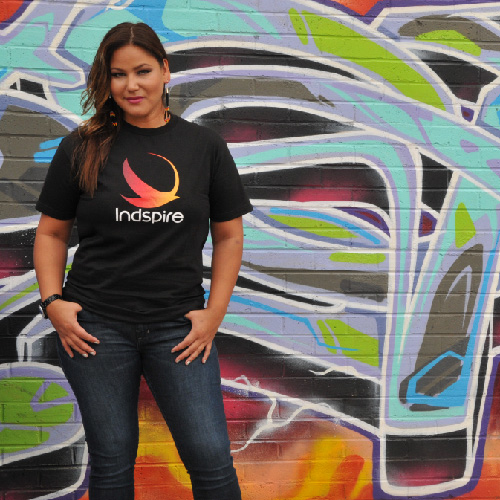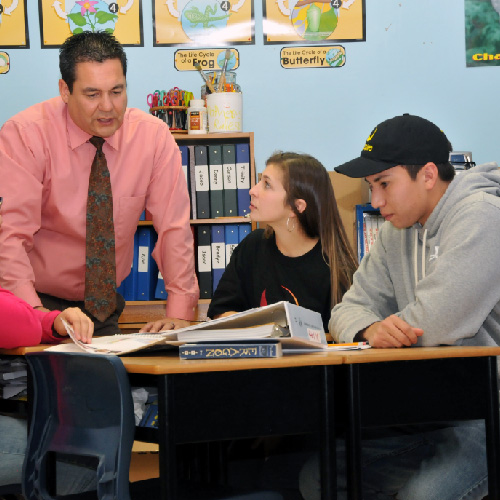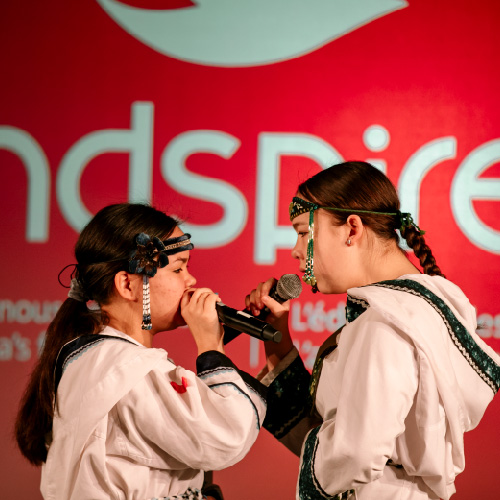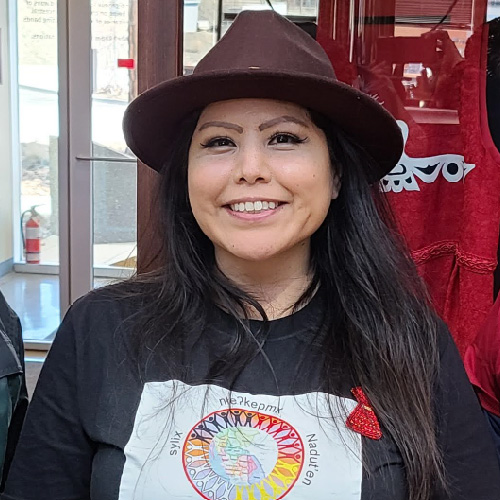Five Supercool Things
Indspire > Five Supercool Things
Do you know these five super cool things about Indigenous culture?
You can help Indigenous youth reclaim their culture by educating yourself with these 5 super cool facts.
Then, take it a step further by supporting Indspire.
Indspire’s scholarships, bursaries, and awards enable Indigenous youth to graduate high school, college, and university. This is the launchpad towards elevating Indigenous experiences, reclaiming Indigenous culture, and bringing us all closer to reconciliation.
Indspire is a national Indigenous registered charity that invests in the education of First Nations, Inuit and Métis people.

DID YOU KNOW?
The Haudenosaunee Confederacy was used as the foundation for the United States Constitution!
There is a ton of evidence showing that Benjamin Franklin and Thomas Jefferson were highly influenced by the Haudenosaunee Confederacy when developing the United States Constitution!
Tired of fighting, Hiawatha developed the Haudenosaunee Confederacy. It united five distinct First Nations throughout New York state and Southern Ontario (Mohawks, Oneidas, Onondagas, Cayugas, and Seneca). This agreement took an innovative approach to peaceful and fair decision-making. Each nation kept their own leadership – but when a decision would impact more than one community, it was decided by the Grand Council of Chiefs. It even designated two branches of legislature for passing laws!
Not convinced the American forefathers “borrowed” their ideas? The Confederacy’s “The Great Law of Peace” shows arrows from each of the five nations bound together to unite their power and represent their union. The seal of the United States features an eagle clutching a bundle of 13 arrows signifying the 13 original colonies!
Clearly, the Haudenosaunee Confederacy shows a sophisticated governing framework we can all learn from. All of Canada benefits when Indigenous voices are able to share their rich knowledge.
Support Indigenous youth reaching their potential by donating to Indspire today.

DID YOU KNOW?
There are more than 70 Indigenous languages actively spoken across Canada
There are more than 70 Indigenous languages spoken from coast to coast to coast, all belonging to 12 core language “families”.
Language is intricately woven through cultural expression and identity. Residential schools forbade the speaking of Indigenous languages, keeping language from being passed from one generation to the next. While several language families are now considered “endangered”, active language revitalization is underway to reclaim Indigenous cultural identity and expression. This includes in-class language instruction, language immersion programs, and the creation of books and audio learning materials in Indigenous languages.
Today, there are over a quarter of a million Indigenous language speakers and this number is growing every year! More and more Indigenous students are becoming fluent and equipping themselves to teach languages to the next generation.
Support Indigenous language learning by donating to Indspire today!

DID YOU KNOW?
Indigenous values are perfectly aligned with the Environmental movement
Back in 1949, one of the first conservationists, Aldo Leopold, published an essay call “The Land Ethic”. He believed that when we see the land (plants, animals, water, and soil) as a member of the community, we will treat it with love and respect.
Scholars who support Leopold’s ideas argue that seeing nature as an unlimited resource to be exploited will be our undoing. Instead, we must learn to view nature as a neighbour.
Little did Leopold realize that since time immemorial, that was precisely how Indigenous cultures view the land and waters! For example, Indigenous women share a sacred connection to the spirit of water and carry the responsibility of protecting and nurturing it.
Indigenous languages refer to natural elements like mountains, skies, and rivers as “they”, or even as members of the family like “brother” or “mother”.
The protection and respect for nature is so intertwined in Indigenous traditions, values and language, that environmental movements have joined forces to support Indigenous land claims and stewardship.

DID YOU KNOW?
Inuit throat singing is the coolest thing you’ll ever hear
Throat singing is a haunting guttural vocalization of the breath used to imitate the repetitive sounds of nature, tools and Inuit life. There are no other cultures in North America that do throat singing.
Two singers hold each other at the elbow and make sounds while they breathe in and out. Each singer makes the same sound but only a half-second off from each other, which blends their voices.
Throat singing is performed by women, and it was used as a competitive pastime back in the villages while the men were out hunting. Women would compete for clothes and even husbands! The winner was the woman who never lost the rhythm, didn’t start laughing, or didn’t lose their breath.
Today, a new generation of Inuit throat singers are finding their way into the contemporary Canadian music scene through Juno-nominated artists like Tanya Tagaq, Riit, Silla and Rise, and the sister duo PIQSIQ.

DID YOU KNOW?
Indigenous youth are the fastest growing demographic in Canada
Nearly 60% of Indigenous people are under the age 30, making them the fastest growing demographic in Canada! But only 10% of them graduate with a university degree, compared to over 25% of non-Indigenous youth.
Education is a powerful tool to address financial and social inequalities, like access to healthcare and intergenerational trauma. When you support one student, you strengthen their family, their community, and the future of Canada.
Think that Indigenous students can attend college or university for free? NOPE! The truth is Indigenous communities need to share a modest pool of funds between all eligible youth in that community. Many qualified Indigenous students receive no support at all.
We can all take action toward Reconciliation. Supporting Indigenous education is a great way to do it!
Your gift to Indspire offers tangible proof to Indigenous youth that you believe in them!
“Education is what got us here, and education is what will get us out.”
– Senator Murray Sinclair, Chief Commissioner of the Truth and Reconciliation Commission







